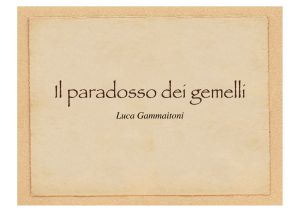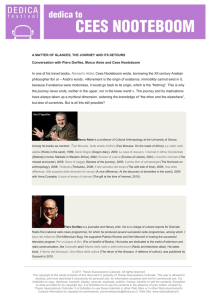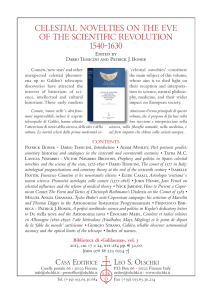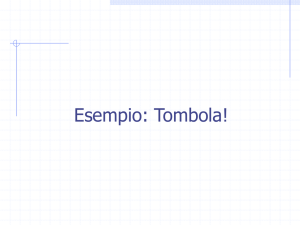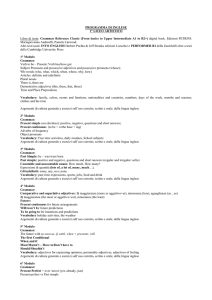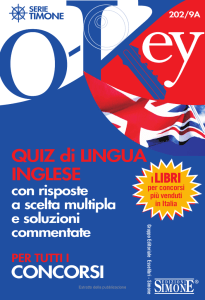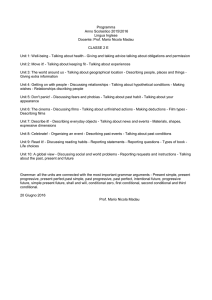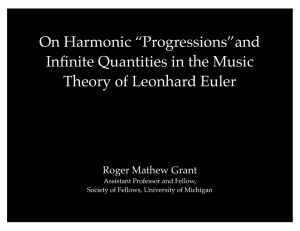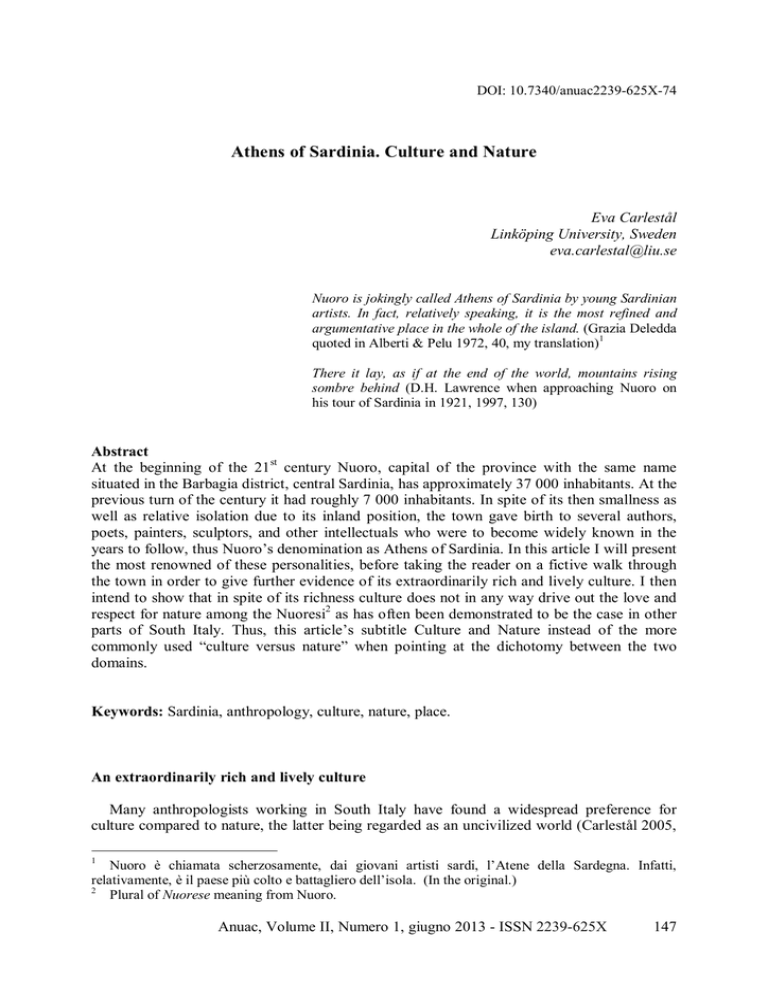
DOI: 10.7340/anuac2239-625X-74
Athens of Sardinia. Culture and Nature
Eva Carlestål
Linköping University, Sweden
[email protected]
Nuoro is jokingly called Athens of Sardinia by young Sardinian
artists. In fact, relatively speaking, it is the most refined and
argumentative place in the whole of the island. (Grazia Deledda
quoted in Alberti & Pelu 1972, 40, my translation)1
There it lay, as if at the end of the world, mountains rising
sombre behind (D.H. Lawrence when approaching Nuoro on
his tour of Sardinia in 1921, 1997, 130)
Abstract
At the beginning of the 21st century Nuoro, capital of the province with the same name
situated in the Barbagia district, central Sardinia, has approximately 37 000 inhabitants. At the
previous turn of the century it had roughly 7 000 inhabitants. In spite of its then smallness as
well as relative isolation due to its inland position, the town gave birth to several authors,
poets, painters, sculptors, and other intellectuals who were to become widely known in the
years to follow, thus Nuoro’s denomination as Athens of Sardinia. In this article I will present
the most renowned of these personalities, before taking the reader on a fictive walk through
the town in order to give further evidence of its extraordinarily rich and lively culture. I then
intend to show that in spite of its richness culture does not in any way drive out the love and
respect for nature among the Nuoresi2 as has often been demonstrated to be the case in other
parts of South Italy. Thus, this article’s subtitle Culture and Nature instead of the more
commonly used “culture versus nature” when pointing at the dichotomy between the two
domains.
Keywords: Sardinia, anthropology, culture, nature, place.
An extraordinarily rich and lively culture
Many anthropologists working in South Italy have found a widespread preference for
culture compared to nature, the latter being regarded as an uncivilized world (Carlestål 2005,
1
Nuoro è chiamata scherzosamente, dai giovani artisti sardi, l’Atene della Sardegna. Infatti,
relativamente, è il paese più colto e battagliero dell’isola. (In the original.)
2
Plural of Nuorese meaning from Nuoro.
Anuac, Volume II, Numero 1, giugno 2013 - ISSN 2239-625X
147
159). In the following my aim is to show that this is not the case in Nuoro. On the contrary, in
spite of its inhabitants paying tribute to and participating in the extraordinarily rich local
cultural life the Nuoresi argue at the same time that nature is in our skin and in our bones.
The internationally most renowned of all the Nuorese artists and intellectuals is Grazia
Deledda (1871-1936) who, as the first and so far only Italian female writer, received the Nobel
Prize for her idealistically inspired writings which with plastic clarity picture the life on her
native island and with depth and sympathy deal with human problems in general (the Nobel
Committee for Literature 1926). Deledda published her first short story when she was
seventeen years old and very many short stories as well as novels were to follow. To mention
just a few of the novels: Elias Portolu (1903), Cenere (Ashes) (1904), Canne al vento (Canes
in the Wind) (1913) and Cosima (her most autobiographical book, published posthumously
in1936). Her home as a child is today one of Nuoro’s several museums: Museo Deleddiano.
One of the rooms in Museo Deleddiano is named Atene dei sardi (the Sards’ Athens) and is
dedicated to six Nuoresi artists contemporaneous with Deledda: Antonio Ballero (painter and
photographer), Francesco Ciusa (sculptor), Pasquale Dessanai (poet), Priamo Gallisay
(musician), Giacinto Satta (painter) and Sebastiano Satta (poet, journalist and lawyer).
The last mentioned, Sebastiano Satta (1867-1914), was a convinced socialist and his poetry
is permeated with his political conviction. He portrays contemporaneous local life and, not
least, the Barbagia landscape including the shepherds with utmost sensibility. He is still today
much loved by the Nuoresi and many know his poems by heart, as for example Canti
Barbaricini (Songs from Barbagia) (1910). Another modern sign of this love is that Satta has
lately become the model for Bustianu (Sardinian for Sebastiano) the main character in
Marcello Fois´ (b. 1960) sympathetic detective stories about a lawyer and poet at the
beginning of the 20th century who always stands up for the weak. Fois, though born in Nuoro,
has long lived in Bologna, north Italy, but just as the trilogy about Bustianu takes place in
Sardinia so do many other of his books and films.
Another writer having followed the town’s first generation of renowned authors is Maria
Giacobbe (b.1928). In the early 50s when Giacobbe wrote her first book Diario d’una
maestrina (Diary of a Teacher) she was a young teacher working in some of the small and
very poor villages in the Barbagia area. Not only was this book translated into numerous
foreign languages but it also gave her the glorious literary award Viareggio Opera Prima
(Viareggio Prize for writers making their début) in 1957. The following year she married a
Danish poet, Uffe Harder, and has lived ever since in Denmark, but she often visits Sardinia
and her place of birth. This is also where much of her written work takes place or has its
origins like for example Øen (Gli arcipelaghi) first published in Danish.
In a book about Grazia Deledda, Giacobbe argues that Deledda was at least as hated and
ridiculed by her co-villagers as Sebastiano Satta was loved. Giacobbe explains this attitude
towards Deledda by putting the female writer into a social and cultural context, and showing
that Deledda was regarded as transgressing moral borders and thereby being unfaithful to her
destiny when as an autodidact Sardinian woman she published books. In those days a woman
had no moral right to do this and Deledda was therefore almost regarded as a public sinner, at
least until she received the Nobel Prize (1974, 22-23). However, even after that Deledda has
rarely been highly praised by Italian critics (Lutzoni 2011). In the comprehensive work Storia
della Letteratura Italiana, which was compulsory course literature when I took Italian at
Lund University in Sweden in the 70s, Deledda is mentioned in less than one page and there
is no reference to the Nobel Prize (Sansone 1973, 524-525). However, lately l´Istituto
Superiore Regionale Etnografico (The Superior Regional Ethnographic Institute) situated in
Nuoro held a one day seminar in order to promote the works of Deledda in the Italian schools
(La Nuova Sardegna 2011-12-07).
Anuac, Volume II, Numero 1, giugno 2013 - ISSN 2239-625X
148
Be that as it may, it goes without saying, however, that in spite of the authors just
mentioned there is no other single work that is so often referred to among the Nuoresi of
today as is the book Il giorno del giudizio (The Day of Judgement) (1977) by Salvatore Satta
(1902-1975).3 As a newcomer in Nuoro I have again and again been told by the people I have
met with, scholars as well as non scholars, that if I really want to know and understand the
town and its people I should read Il giorno del giudizio. “It is all there”, they say. Satta,
originally from Nuoro, was a prominent jurist and professor of civil law at the University of
Rome. He published academic work as well as fiction, out of which this book, which he wrote
as a pensioner, is without comparison the most well-known. The manuscript was found
among his posthumous papers and was published a couple of years after his death. The book
centres on the aristocratic Sanna Carboni family and describes with deep psychological
insight this family as well as many other Nuoresi characters at the beginning of the 20th
century. It is regarded as a work of great importance and may very well be compared with
Giuseppe Tomasi di Lampedusa’s internationally more well-known Il Gattopardo (The
Leopard) (1957) about an aristocratic Sicilian family at the end of the 19th century, both as
regards its content, style, and its significance.
As just mentioned, this book is very often referred to by today’s Nuoresi and many of them
say that they have read it not just once but several times. The extensive reading does not only
go for Satta’s book, however. When meeting with the Nuoresi for the first time I was struck
by the fact that on the whole they seemed to read and talk about literature quite a lot. This is
not my experience from living several years in other parts of South and Central Italy. Sardinia
is certainly different in many respects of which this seems to be one. Visiting Nuoro’s public
library, named after the poet Sebastiano Satta, I was once given statistics for the year 2010
showing that that year 67 614 loans were effectuated – in a town with approximately 37 000
inhabitants!
In a separate building, the so called Sezione Sarda (the Sardinian section), the library
houses a vast collection of Sardinian works of fiction as well as scientific work on the island.
In this section we can also visit Sebastiano Satta’s working studio. Whenever visiting the
library I have noticed that both parts of it are always very frequented by men and women of
all ages. This goes also for participation at the many cultural events offered by or in
collaboration with the library.
These habits of reading are moreover reflected by the number of bookshops in Nuoro.
There are five, of which one has specialised in religious literature and one in school books and
scientific literature, while the other three offer works of fiction. There are also Nuoresi
publishing houses, of which Ilisso is the biggest in Sardinia. It has specialized on the
Sardinian culture and for example its art history, poetry and archeology.
One frequent theme among the Nuoresi writers is the shepherds: their life and their close
relation to nature in the bosom of which they spend most of their time. What is more, the
shepherds themselves are often said to have been great poeti pastori (poet shepherds). A
typical and much appreciated form of their art used to be (to a limited extent it still is) poetic
verbal competition before an audience. The duelists improvised for hours on fixed themes and
some of these texts/songs – always in the Sardinian dialect – have lived on for generations.
The first written evidences of such competitions are from the first half of the 19th century
(Mathias 1976). Thus, the shepherds´ poetry is older than any work of the artists and writers
discussed in this article. To argue that it thus forms the basis for other literature to come – that
3
Satta is a common name in Nuoro. Thus, Salvatore Satta is not related, at least not closely, to
Sebastiano Satta.
Anuac, Volume II, Numero 1, giugno 2013 - ISSN 2239-625X
149
the shepherds should be the explanation of Nuoro’s cultural richness – I believe would,
however, be difficult to prove as well as to deny. But it is true that poetry writing is
considerably widespread among people in general still today and also encouraged by the
Sardinian authorities which finance competitions on regional, provincial as well as local
levels. People are invited to send in their work in the hope of getting it published.
1. On many house façades in Nuoro’s old districts there are painted quotations from Nuoresi
writers.
***
When visiting Nuoro in 1921 D. H. Lawrence4 wrote that “There is nothing to see in
Nuoro: which, to tell the truth, is always a relief. Sights are an irritating bore” (1997, 141). If
that was once the case, the more there is to see coming to the town today. So, for example, the
number of museums is impressive for a town of its size. I have already mentioned that
nowadays Grazia Deledda’s parental home is a museum. Apart from offering its visitors the
possibility to see a Sardinian home from the previous turn of the century there is also a garden
in which cultural activities of various kinds take place during summer time. I once
participated at such an occasion when an elderly man read love letters from a then very young
Deledda to his own grandfather!
On the outskirts of Nuoro on the mountain Sant’Onofrio we will now start a fictive walk
through the town. Here Sardinia’s major ethnographic museum Il museo della vita e delle
tradizioni popolari Sarde (The Museum of Sardinian Life and Popular Traditions) is situated
4
Lawrence mentions briefly Deledda’s books in his own book about travelling in Sardinia (1997,
144). In 1928 he also wrote an introduction to Cape’s edition of La Madre (The Mother) first
published by Deledda as a serial story in Il Tempo in 1919.
Anuac, Volume II, Numero 1, giugno 2013 - ISSN 2239-625X
150
with a beautiful view over Barbagia’s mountainous landscape. Its collection consists of
traditional male and female clothing, jewelry made of silver, gold and coral belonging to the
very rich female dresses or being votive gifts, other textiles and wooden artifacts, weapons,
carnival masks, musical instruments, tools and kitchen equipment and more than 600 different
kinds of bread representing various seasons, festivals, phases in the life cycle etc. This block
of buildings, constructed as a traditional Sardinian village, also contains a big hall where
seminars, meetings, theatrical performances and concerts are held.
Walking downtown from the ethnographical museum one passes the art museum, Museo
Ciusa, housed in the former tribunal adjacent to the cathedral. Francesco Ciusa (1883-1949)
was the initiator of modern sculpture in Sardinia and had his first great success in 1907 with
the work La madre dell’ucciso (The Murdered Man’s Mother) at the Venice Biennale. His
fame continues into modern times and thus, in connection with the celebration of 150 years of
Italian Unity in 2011, another work of his, Il Pane (The Bread), was shown in the art gallery
situated inside the Vittorio Emmanuele Monument complex in central Rome.
Another internationally very renowned sculptor is Constantino Nivola (1911-1988) from
the village of Orani within the province of Nuoro. A museum is dedicated to his work in his
birthplace, but in the 60s Nivola was also entrusted by the town of Nuoro’s local authorities to
create a monument dedicated to Sebastiano Satta. The result was la Piazza Satta (Satta
Square) with its big granite blocks into which the artist placed bronze statuettes showing the
poet in different situations during his lifetime.
2. It is always easy to find a library coming to a Sardinian town – signs indicating the way to the
hospital and the police also tell how to find the local library.
Before coming to la Piazza Satta on our fictive walk we will, however, pass il Museo
Archeologico Nazionale (The National Archeological Museum) with findings from the whole
province of Nuoro. Entering this museum the visitor will find him-/herself at first in a
speleological exhibition with mineralogical and paleontological samples. Thereafter follows
the archeological exhibition with several halls dedicated to the Upper Paleolithic and the Late
Anuac, Volume II, Numero 1, giugno 2013 - ISSN 2239-625X
151
Bronze Age as well as the Nuragic, the Phoenician, the Roman and the medieval eras. To the
foreigner the, at least internationally, rather unknown Nuragic civilization may be of
particular fascination. This prehistoric people is mainly known for having built more than
8000 nuraghe (stone fortresses) all over the island, each consisting of one or more large
towers besides smaller buildings of various kinds. Today’s tourists will find that the nuraghe
are in various stages of decline, though some of the towers are still possible to climb.
The next stop on our walk will be MAN – Museo d´Arte della provincia di Nuoro (The Art
Museum of the Nuoro Province), which hosts a collection of twentieth-century Sardinian art
but also gives space to modern Sardinian as well as non-Sardinian artists. One example of the
latter was when on my visit to Nuoro in the spring of 2011 I was able to see the exhibition
Dreamtime. Il linguaggio dell’arte aborigena (Dreamtime. The Language of Aboriginal Art).
It was a colourful event showing the works of contemporary Australian artists and the largest
collection of aboriginal work that has ever left Australia.
3. Women picking wild fennel and flowers in the countryside.
As usual when I am strolling about the streets of Nuoro I will end also this fictive walk at
the bar Tettamanzi, where many of Salvatore Satta’s characters in Il giorno del giudizio (The
Day of Judgement) used to meet. There I ask for an espresso while reading a Sardinian daily
paper and watching one of the temporary art exhibitions that the bar often offers.
By now I hope that the reader has come to the same conclusion as I have, namely that it is
amazing that there is so much literature, art and other manifestations of human intellectual
achievement in a town of Nuoro’s size. Still I have not mentioned all the monuments there are
to be seen or the many traditional dance groups and I have not even touched upon Nuorese
film or the very rich music life including the many local choirs of various kinds. Neither have
I discussed the newly-awakened interest among young people of both sexes when it comes to
Anuac, Volume II, Numero 1, giugno 2013 - ISSN 2239-625X
152
local culture. A sign of this are young people whose cell phones I have overheard that have
the traditional Sardinian songs called canto a tenore (tenor singing) as their signal.
Nature is in our skin and in our bones
I think it is fair to say that the town as such is not particularly beautiful, though there are
beautiful spots like for example parts of the two old districts San Pietro and Seuna and Mount
Sant’Onofrio where Bustianu, the main character in Marcello Fois’ detective stories
mentioned above, used to take his daily walks enjoying the then unspoiled landscape. But the
more so are Nuoro’s mountainous surroundings, and the Nuoresi seem to have a special love
for Mount Ortobene situated on the outskirts of the town. This goes also for the writers
mentioned above – much of their literature as well as poetry is dedicated to the Barbagia
landscape in general and parts of it to Mount Ortobene in particular. Likewise for Antonio
Ballero (1864-1932), the painter and photographer, the Barbagian landscape was a recurring
motif. He captured its tone at dawn, in the twilight, in summer as well as in winter. And as so
often, the shepherds and their animals were a natural part of his work of art too.
During leisure hours people come to Mount Ortobene for walks, picnics, and to enjoy the
rich flora and fauna as well as the fresh air. Youngsters come to bike or to do other sorts of
sport. Many Nuoresi tell me that just as they were brought here by their parents when they
were kids, today they bring their own children. The older generation also remembers war time
when they took shelter here from feared bombs. Luckily, however, Nuoro was never bombed.
On the top of Mount Ortobene, 995 metres above sea level, the statue Il Redentore (The
Redeemer) was inaugurated on August 29, 1901 following Pope Leo XIII:s wish to begin the
new century with one statue of the Redeemer placed on a mountain top in each of Italy’s
regions. In Sardinia the church decided to place it on the outskirts of Nuoro. Here the
Nuoresi’s most important religious feast takes place each year on August 29th. To most locals
this feast is even more important than the yearly feast of Santa Maria della Neve (Holy Mary
of the Snow), the patron saint of Nuoro, which takes place at the beginning of the same month.
A few days before the feast of Il Redentore a procession made up of close to one hundred
folkloristic groups from all over Sardinia, dressed in traditional clothes and dancing and
singing, paints the town in all imaginable colours. Then on the day of Il Redentore people
gather early in the morning outside Nuoro’s cathedral and, singing, they begin the pilgrimage
up to the statue. The cortege is headed by a cart decorated with ears of wheat and oleander
flowers. Once at the statue a mass is celebrated, where-after follows a procession along the
roads of Mount Ortobene.
***
As claimed above many anthropologists working in South Italy have argued that there is a
general preference for culture compared to nature. In fact, it has sometimes been argued that
this is one of the marked differences between South and North Europeans, that is, in the North
people are supposed to give prominence to nature, while the South Europeans´ preference for
culture is expressed for example in an urban ethos, according to which culture and civilization
“are to be found only in towns and cities, while nature/countryside is regarded as their
distinct antithesis – it is an uncivilized world, where disdained physical work is carried out,
and where nobody wants to live” (Carlestål 2005, 159, see also e.g. Redfield 1973, 60ff).
In the same vein Donna Gabaccia writes about the peoples of the Mediterranean by the end
of the 19th century arguing that “Bourgeois and urban notions of civilized behavior
Anuac, Volume II, Numero 1, giugno 2013 - ISSN 2239-625X
153
symbolically reduced male peasants to the level of beasts that lived in the uncivilized
countryside. Shepherds who worked long weeks alone with their animals seemed particularly
dehumanized” (2000, 85). What a difference compared to the honoured Sardinian so called
poeti pastori (poet shepherds)!
So, coming to Sardinia a second thing that struck me (the first thing was the much
literature and reading) was that here there is no such contradiction between the relation to
nature on the one hand and to culture on the other. On the contrary! Deledda and her fellow
authors for example have described Barbagia’s nature with great love and sensibility.
Personally I have experienced that when meeting with Sardinians and talking about their
island they often spontaneously start talking about nature and when taking me on tours they
have sometimes asked me whether I would prefer to experience culture or nature. This is a
distinct difference from my previous experience in for example Sicily. My first Sardinian
acquaintance was a young woman who emphatically stressed when talking to me that nature
is so very important for the Nuoresi. Her mother in law added that “Nature is in our skin and
in our bones”.
Thus, ss shown in this article Nuoro certainly merits its old denomination Athens of
Sardinia, dating back to the 19th century but still today often used. In for example travel
booklets about Nuoro the expression is used to attract tourists, a literary café where I have
spent several evenings listening to modern Sardinian writers is also called Atene Sarda and
visiting the home page of the daily Sardinian newspaper La Nuova Sardegna
(http://lanuovasardegna.repubblica.it) one will find a number of articles referring to Atene
Sarda. Another denomination at least as much used today is la capitale culturale della
Sardegna (the cultural capital of Sardinia). However, my main argument is that among the
Nuoresi nature is as highly appreciated as culture and just as people spend time on the many
cultural activities that their town offers they spend time enjoying Nuoro’s surroundings.
Mount Ortobene elucidates this love of nature more than anything else. No wonder that the
feast of il Redentore celebrated on top of that mountain has become the most strongly felt
religious festival in Nuoro. On that very day nature and culture meet while embracing its
people. As Deledda once wrote:
No, it is not true that Mount Ortobene can be compared to other mountains: there is only one
Mount Ortobene in the whole world: it is our heart, our soul, our character, everything there is that is
big and small, sweet and hard and bitter and painful in us (quoted in Alberti & Pelu 1972, 42, my
translation).5
References
Alberti, Ottorino and Peluffo, Silvio, 1972, Il nuorese cuore della Sardegna, Cagliari,
Editrice Sarda Fossataro.
Carlestål, Eva, 2005, La Famiglia. The Ideology of Sicilian Family Networks (dissertation),
Uppsala University, Sweden
Gabaccia, Donna, 2000, Italy’s Many Diasporas, London, UCL Press.
Giacobbe, Maria, 1974, Grazia Deledda. Introduzione alla Sardegna, Milano, Bompiani
La Nuova Sardegna, 2011-12-07 (One of Sardinia’s daily papers).
5
No, non è vero che l'Ortobene possa paragonarsi ad altre montagne; l’Ortobene è uno solo in tutto
il mondo: è il nostro cuore, è l’anima nostra, il nostro carattere, tutto ciò che vi è di grande e di
piccolo, di dolce e duro e aspro e doloroso in noi. (In the original.)
Anuac, Volume II, Numero 1, giugno 2013 - ISSN 2239-625X
154
Lawrence, David Herbert., 1997 [1921], Sea and Sardinia, Cambridge, University of
Cambridge.
Lutzoni, Silvia, 2011, Ignorante? Leggeva Hugo e Poe. I pregiudizi sulla scrittrice e sulla
donna, La Nuova Sardegna, April 6, p. 33
Mathias, Elizabeth, 1976, La Gara Poetica: Sardinian Shephers’ Verbal Dueling and the
Expression of Male Values in an Agro-Pastoral Society, Ethos, 4, 4, 483-507.
Redfield, Robert, 1973 [1956], The Little Community and Peasant Society and Culture,
Chicago, The University of Chicago Press.
Sansone, Mario, 1973, Storia della Letterature Italiana, Milano, Principato Editore.
Eva Carlestål è Dottore di ricerca di Filosogia in antropologia culturale presso l’Università di
Uppsala, Svezia e, dal 2007, è Senior Lecturer in Language and culture presso la Linköping
University. Il suo campo di ricerca è l’Italia, nello specifico le società insulari, in particolare
quelle della Sicilia e della Sardegna.
Anuac, Volume II, Numero 1, giugno 2013 - ISSN 2239-625X
155


